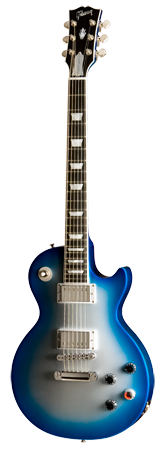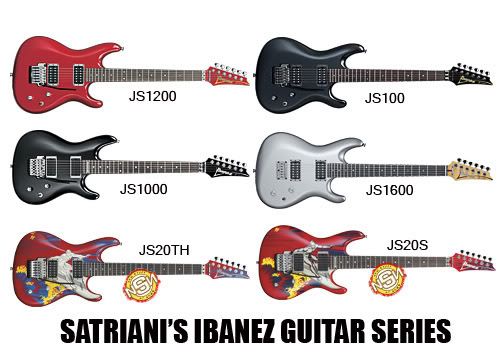Gibson Robot Guitar

The Gibson Robot Guitar is a sub-model of the famous Les Paul and SG style guitar from Gibson. Currently, there are 2 different models available: The Robot Les Paul Studio, and Robot SG, as well as the first production limited edition model. Developed by Chris Adams, its most notable feature is that it uses an onboard computer to automatically tune itself without the need for an electronic tuner. This is not the first guitar to be able to tune itself, but it is regarded as the most modern, unique, and un-invasive self-tuning model available, because it does not employ cams or cantilevers throughout the body of the guitar.The non-limited edition SG and LP Studio are available in metallic purple, metallic green and metallic red. The price can range from about $1,000-$3,000 or more for custom options.
The tuning system used on the Gibson Robot Guitar is based on the aftermarket Powertune system, which was developed by the Tronical Company of Germany. The Gibson system uses the standard Tune-o-matic style bridge typical on their guitars, but modifications were made to have individual piezo saddles that transmit each string's pitch to the microprocessor. The computer analyzes the signal, and then controls each of the Powerhead Locking Tuners. Each tuner is run by a small servo motor that works in sync with the bridge to bring the string up to pitch by altering the strings tension until it is within a desired tolerance. The entire system is powered by a lithium-ion rechargeable battery housed in the control cavity of the guitar.
The Robot Guitar has the standard four knobs for individual pickup volume and tone controls; however, in place of the bridge pickup tone knob, there is the Master Control Knob (MCK). The control functions like a “push-pull” knob: when in the down position, it functions like a standard control. When in the up position, however, the MCK is what coordinates the automatic tuning for the guitar
TUNING
Users can choose from seven factory presets for tunings, six of which are editable:
- D-A-D-G-A-D
- Open E
- Open G
- Dropped D
- Double Dropped D (Drop C)
- Eb
Out of the box, the guitar is calibrated to use a .10 gauge set of strings, and will tune up within a tolerance of one cent The calibration can be changed to heavier or lighter strings, and the tolerance can be changed as well. The greater tolerance the user is willing bear, the faster the Robot Guitar will tune itself. On the fastest setting, Gibson claims that the guitar will tune up in about 15 seconds with a tolerance of 2.5 cents.
The onboard computer allows for each of the preset tunings to be overridden by user inputs, but the factory presets can be restored by resetting the computer.According to company press releases, the system allows for 200 tunings before the battery has to be recharged. This is accomplished with a standard ¼” patch cable connected into a provided AC adaptor, and takes about 90 minutes for a full charge.It is important to note that the system is able to be disabled and tuned just like a regular guitar. To do this, it requires the user to disengage the tuning button, making the adjustment manually, and re-engaging the system once the adjustment is complete.
Source : Wikipedia
You can meet the Inventor of the Robot Guitar's Self-Tuning System in Gibson web HERE and download the manual of Gibson Robot Guitar HERE















